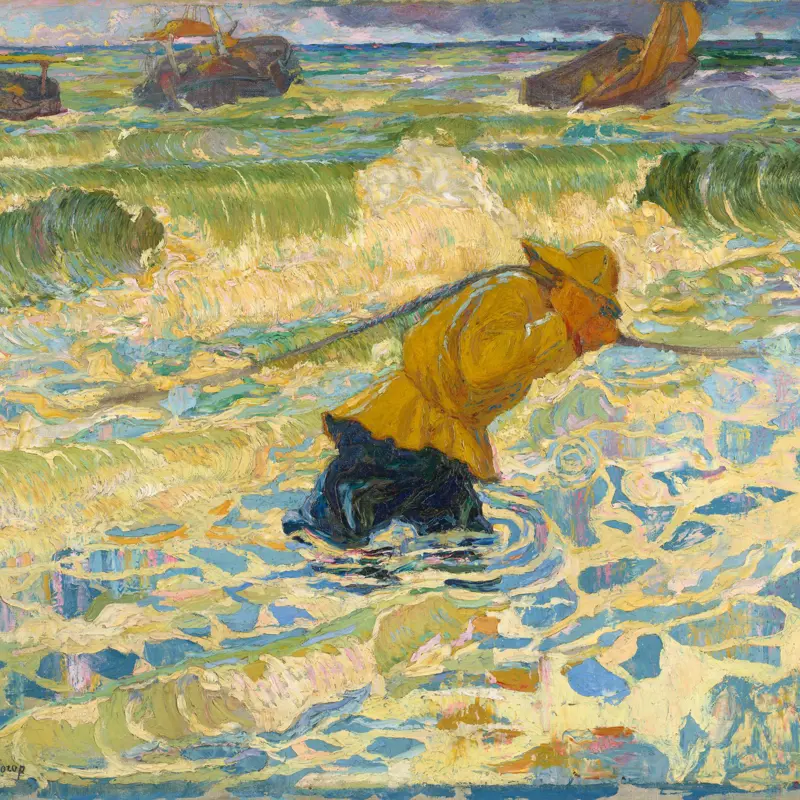Jan Toorop was one of the most influential artists in the Netherlands around the turn of the 20th century. His extensive oeuvre encompasses a variety of techniques and mediums – from drawing, painting and printmaking, to stained glass – shifting fluidly between colourful pointillism and his characteristic linear Symbolism.
A Dutch-Indonesian artist, Toorop left Indonesia at a young age and studied at the Royal Academy of Fine Arts in Amsterdam from 1880 to 1882. The following year, he enrolled at the École des Beaux-Arts in Brussels and became an active member of the avant-garde, travelling to Paris and London with fellow artists.
While in Brussels, Toorop joined the anti-academic Les XX group, founded in 1883. He was only one of four foreign members and participated in almost all their yearly exhibitions between 1884 and 1893. Through his involvement with Les XX, Toorop worked in a more colourful, Neo-Impressionist palette and eventually became one of the most important pointillists in the Netherlands.
After returning to the Netherlands with his English wife Annie Hall in 1890, Toorop began experimenting with Symbolism. He combined dreamlike compositions with Art Nouveau linework, emphasising the mysticism of his figures. Both his Symbolist and Neo-Impressionist works encompass a certain social criticism, often addressing the tough living conditions of rural communities. During the final years of his life, Toorop turned to Catholicism as his main form of inspiration, painting numerous religious scenes in a more geometrical, linear style.

